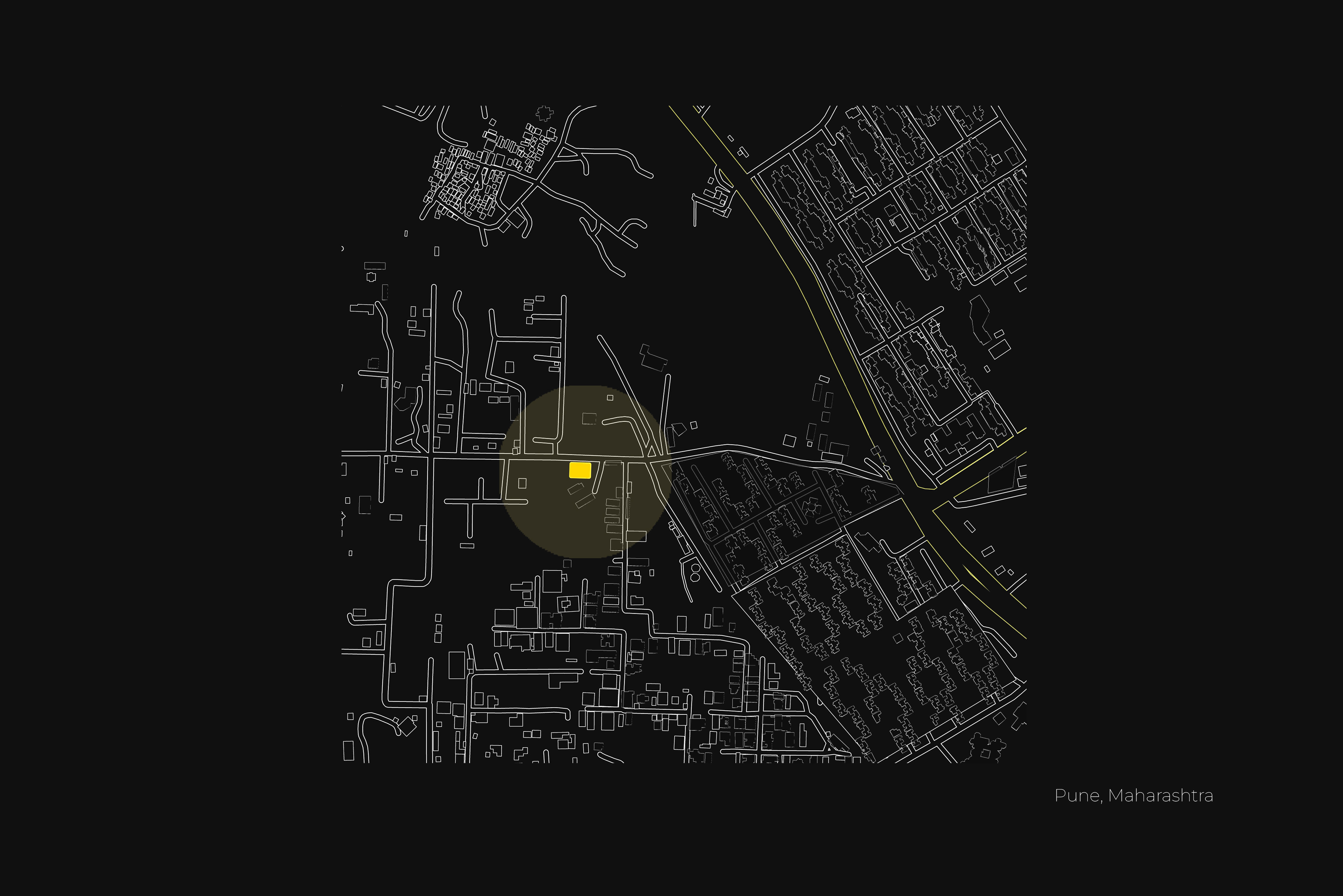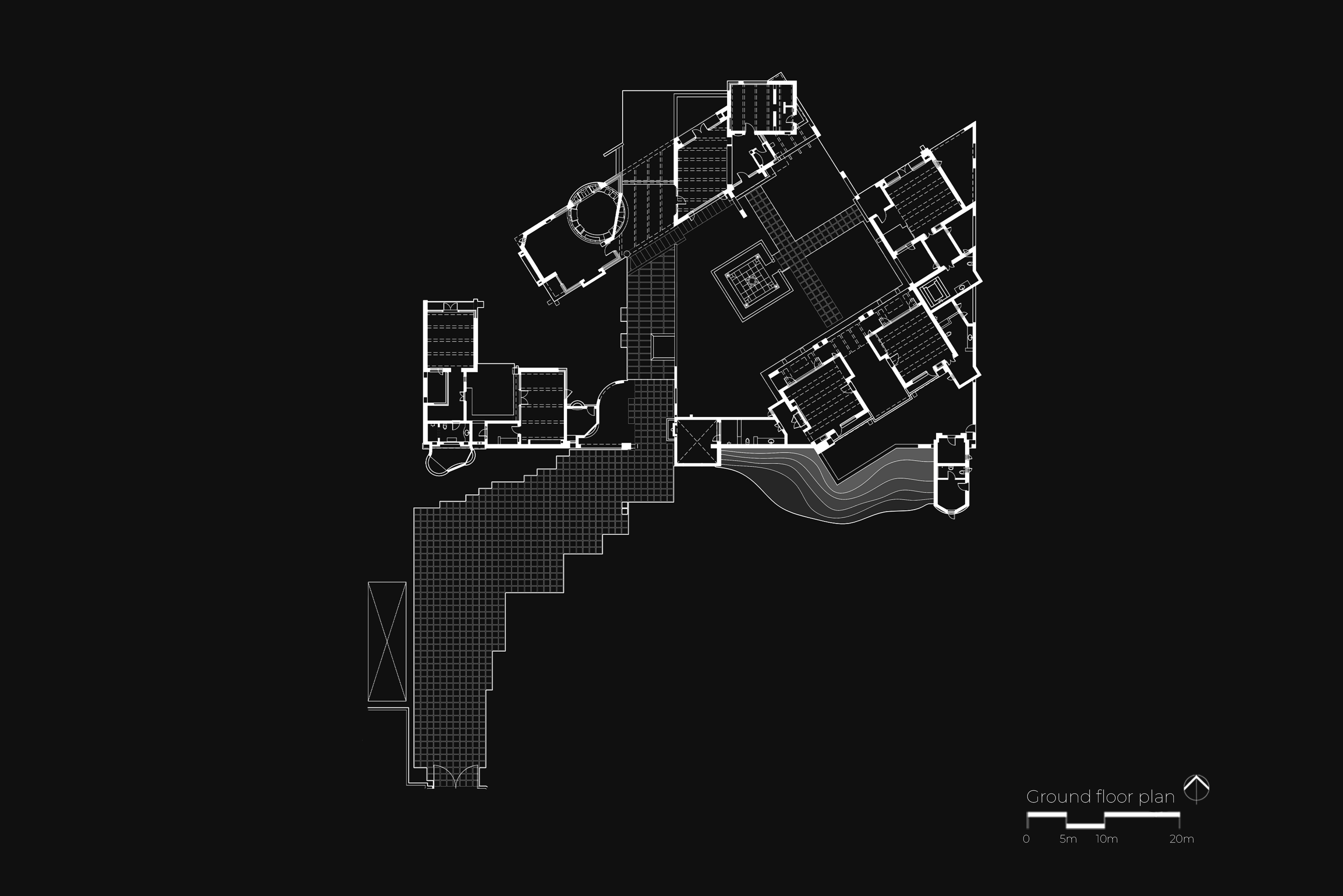These axes related elements were forged together through the binding influence of courtyards and though it was the intention to fragment the house, yet there is a strong sense of continuity.
Delhi is a confluence of cultures, layered over by dynasties and civilizations. The various enigmatic aspects of Delhi were an essential part of the design concept of this residence.
The other salient features of the concept are to address the social norms that have shaped the development of residential architecture in India – the concept of a joint family, the expandability of the house, the grouping of living areas around courtyards, the respect for the environment and ecology, the understanding of light and shadow and the exploration of the use of traditional and modern materials.
The plan of the residence is generated through the creation of powerful visual axes that not only respects the formal planning of ancient Delhi, but more importantly punctuates the site with strong visual elements like stone columns that are more than 200 years old, thereby establishing a historical identity to the site. This was part of the expression, so as not to date the house, but set it in a kind of ‘time wrap’ wherein the past and the present fuse together to move into the future.
House of Axes
- Mr. Bakul Jain
- New Delhi
- 10,000 sq.ft.
- Completed 1995
- Kamal Malik, Ketan Chaudhary, Mahesh Suthar
- Bharath Ramamrutham
























